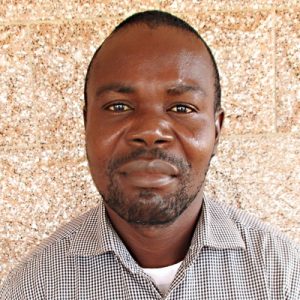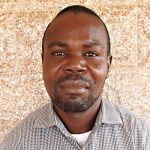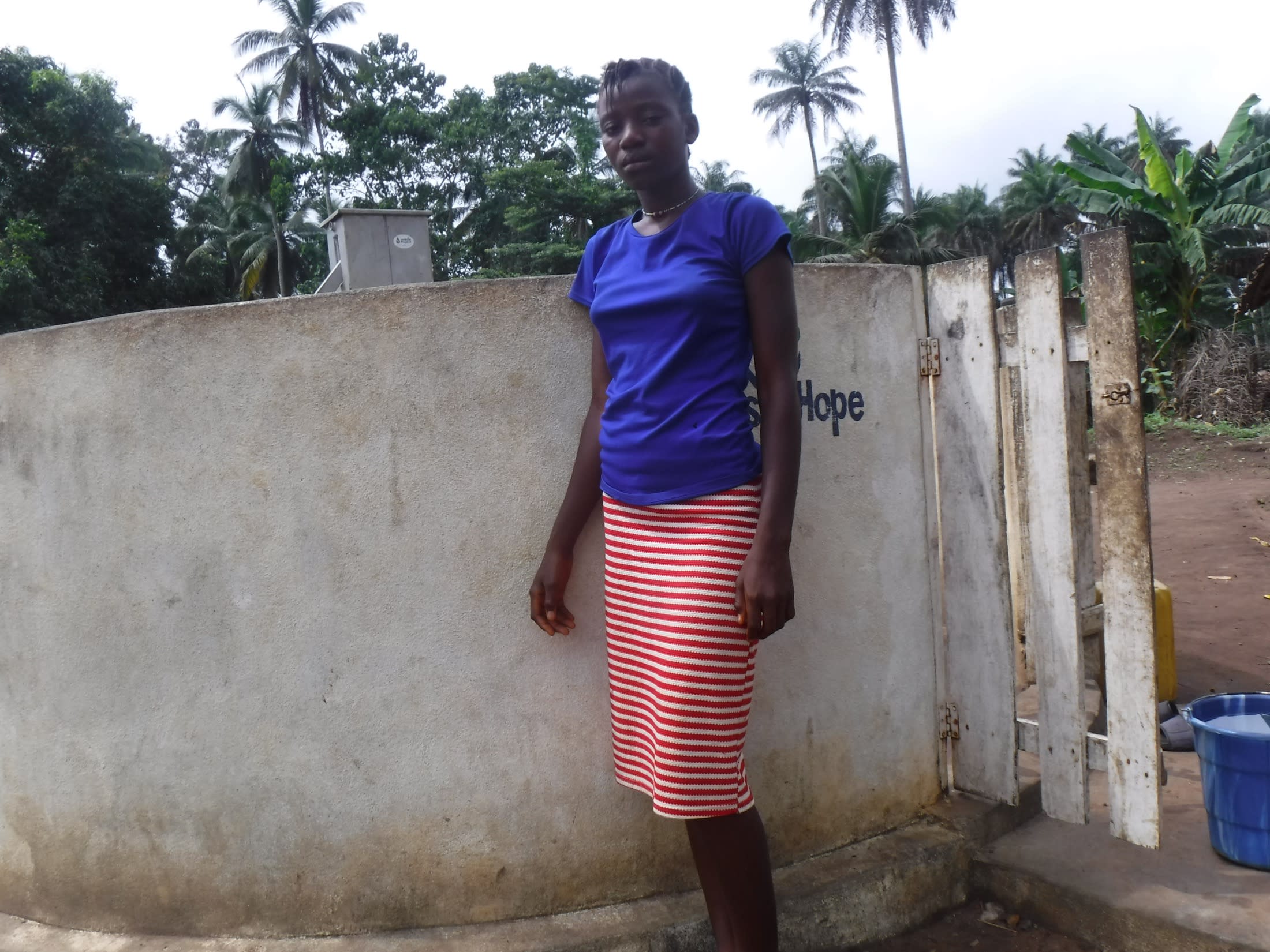Approaching Conteya village is a bridge that was recently rehabilitated by the Port Loko district council. It separates Mapeh village and Conteya village. The village entrance is lined with tall palm trees, home to the palm wine harvesting tribe called the Limbas. The bridge is half a mile away from the village. The palm trees cover acres and acres of land stretching from the bridge to the town. Large trees around the houses have been around for generations, bringing shade and food to the community.
The well for the 441 people here broke down several years ago, and the only source of water at the moment is surface water in the swamp. The community faces many challenges with the swamp water. These range from possible exposure to snake bites, walking far distances on a narrow footpath to get there, the water being contaminated, and inadequate supply.
The water source is filled with leaves, debris, tadpoles, frogs, leeches, fish, and other contaminants that are not fit for human consumption. Drinking water from the source causes waterborne diseases, including typhoid and dysentery.
"I am tired of drinking contaminated water," said Nabie Kamara, the village Headman.
"Personally, the water crisis has increased the number of reported waterborne diseases for the children. The clinic is far away from our village, and as a village leader, I am concerned about what happens to people in my community when it comes to medical response. We are always going to require clean water, and the more the population increases, the more our use of water is also going to increase."
Fetching water from the swamp is generally a chore for children. They travel to the swamp and fill up their buckets with water to carry home. When the children cannot fetch their required number of buckets for the day, the mothers usually step in while the children go to school. This adds yet another chore to the mothers' busy schedule all in the name of doing what is needed to keep their families going.
"The water source is far away from the village. It will be much better if it is in the village," said young teenage boy Alusine.
The proposed project is going to bring all of the above to an end. The only way of getting safe and clean water for the people here is by using that well. The conversion of the well to a borehole will eliminate the water point's possibility of ever going dry. Using surface water to drink poses significant dangers to all members of the community. The proposed project will also eliminate exposure to harmful minerals and bacteria present in the water from the surface water source.
What We Can Do:
Well Rehabilitation
The well marked for this overhaul is dry for a few months every year and needs major work to supply adequate, clean water to the community year-round. The pump will be removed, and a hand auger will be lowered inside and powered by a drill team. This hand auger will allow the team to drill several meters deeper to hit a sufficient water column to ensure the well supplies water throughout all seasons.
As the team drills, casing will be installed, transforming the bottom of this hand-dug well into a borehole. PVC piping will connect this lower system directly to the pump, a construction that we know will also improve the quality of water.
Once this plan is implemented, everyone within the community will have access to safe drinking water in quality and quantity, even through the dry months.
Training on COVID-19 Prevention, Hygiene, and Sanitation
We will offer three consecutive days of training on COVID-19 prevention and improved hygiene and sanitation practices. Our dedicated session on COVID-19 will include lessons on virus symptoms, transmission routes, and prevention best practices. We will communicate our expectations of physical distancing and wearing masks for all who choose to attend.
The hygiene and sanitation session will emphasize the importance and effectiveness of handwashing in preventing not just COVID-19, but many diarrheal diseases. Trainers will teach community members how to build a tippy tap handwashing station built using a jerrycan, string, and sticks. We will use these tippy taps for handwashing demonstrations and while also teaching about other tools like dish racks and the importance of properly penning in animals to help reduce disease transmission within the household.
This training will also strengthen the water user committee that manages and maintains this well. The committee enforces proper behavior and reports to us whenever they need our help solving a serious problem, like a pump breakdown.

 Borehole Well and Hand Pump
Borehole Well and Hand Pump

































